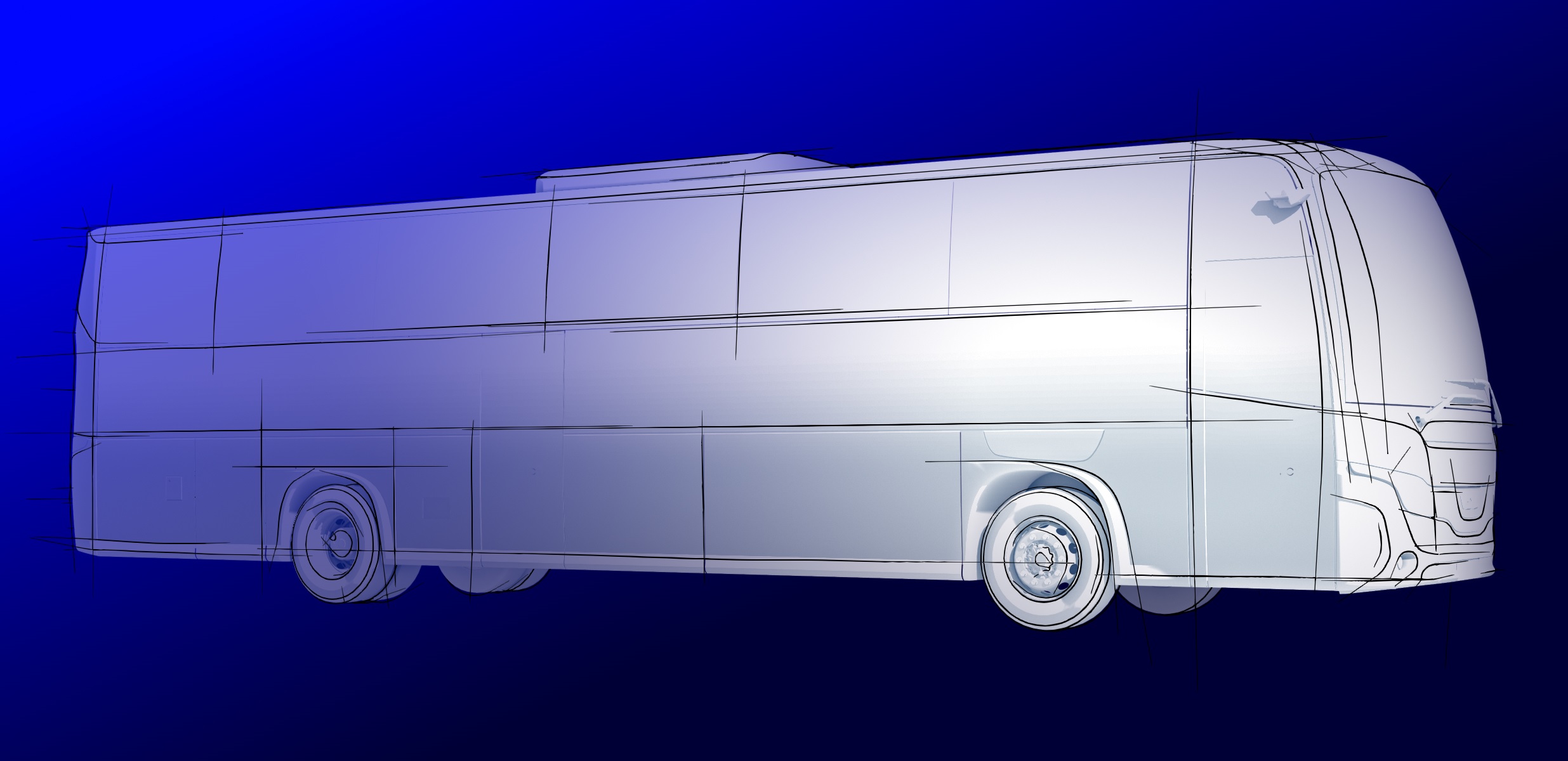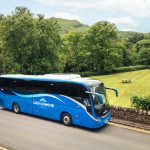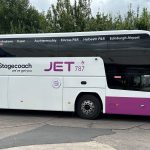VDL has given a broad outline of the direction of its integral coach range by revealing some details of the nascent Vision Futura project, which will ultimately supersede the existing Futura 2.
So far a single Vision Future prototype has been built. Formal launch is due in Q4 2024. While it continues with established VDL design language, and is based around the Futura 2’s strengths, the Dutch OEM says that Vision Futura is otherwise a new platform to which significant work has been done to maximise efficiency and prepare for zero-emission driveline technologies.
Development of Vision Futura is ultimately a result of the European Union General Safety Regulation (GSR), which will apply progressively to vehicles registered in the EU. Complying with GSR puts major demands on electrical architecture through its inclusion of cybersecurity and driver assistance systems.

VDL Bus and Coach Business Manager Coach Pieter Gerdingh notes that GSR is “very impactful” on vehicle design. “So we decided to combine meeting it with developing our next-generation Futura platform,” he adds. “This is a new product, although we have leaned heavily on existing knowledge.” Such is the scale of change, Vision Futura could well be regarded as the Futura 3, he suggests.
Staged rollout for VDL Vision Futura range
The Vision Future project will come in stages. Presently there is no decision on whether it will take on every size category occupied by the Futura 2, or when it will arrive in right-hand drive. Instead, VDL says that progress is planned in a graduated manner. The first variant to debut will be the core 12.9m, two-axle version in recognition of that being the best seller of FHD2 models.
Despite clear positioning on zero-emission, diesel will be the initial focus. Mr Gerdingh notes the closeness between VDL and engine supplier DAF, such as the depth of the integration of DAF power units into the Futura 2. He expects Vision Futura’s diesel pathway to align with the engine OEM’s policy, including where it goes for Euro 7. In the long-term, that could expand to include hydrogen combustion.
But while Mr Gerdingh believes that interest from the coach industry in zero-emission is growing, widespread volume orders are still some way off. Yet when they come, they will come quickly. VDL needs to be prepared for that change with its Vision Futura work. “And we are,” he adds.

Battery-electric and hydrogen fuel cell-electric power sources are both in the frame to satisfy that demand. VDL expects that batteries will be the first of those to market in Vision Futura. Its work there will lean heavily on the recently-introduced next-generation Citea battery-electric bus range.
The first next-generation Citeas recently entered service in Eindhoven and orders for around 750 more have been taken. The model brings improvements in battery capacity and range. A 15m, tri-axle Citea is part of the roadmap, which may give a better idea of how battery-electric could sit in Vision Futura.
Range commonality clear across new coach product
Styling changes are clearly visible on the Vision Futura prototype and separate front and rear section mock-ups. So too is the new model’s lineage, with even the odd hint of the Bova Magiq in play. A balance between style and functionality has been struck, Mr Gerdingh explains. Ease of repair was considered, along with weight reduction. Styling changes also sit in parallel with drag reduction efforts.
To that end, the front has been designed to drive all oncoming air to the side of the coach. Such a passage is smoother than beneath the vehicle, delivering aerodynamic benefits. At the rear, small protruding ‘fins’ at the sides and roof line further smooth air turbulence, although they may be vulnerable to damage at lower levels.
Other styling changes to the front and rear include to areas around the manufacturer’s badges. Perhaps most noticeable on the disguised prototype is overhaul of light clusters. At the front, the new unit is as distinctive as the existing Futura 2 component, but it now comes with protruding indicators. At the rear, it is shared with the next-generation Citea.

The headlights give what VDL says is a good spread and intensity of illumination, which will assist in reducing driving stress. Vision Futura incorporates various safety systems in accordance with GSR requirements, and improved frontal protection. Fitted to the prototype are conventional rear-view mirrors. VDL expects to offer either cameras or mirrors on production examples.
Vision Futura: No volume at expense of margin, says VDL
Nothing has yet been seen of the interior of Vision Futura, but VDL promises improvements. A new seat range will debut. It will deliver enhanced comfort and include amenities to make travel “a real pleasure,” the OEM says. Further ideas are in hand that include potential for a “social area,” it continues.
Details in other areas are also scant for now. VDL cannot yet disclose how the reduction in weight will impact individual axle loadings on two-axle coaches, although it says that the Futura 2’s good roadholding will not be compromised.

Delivering further variants beyond the 12.9m, two-axle bread and butter coach is dependent on a suitable business case for those. VDL Bus and Coach CEO Rolf-Jan Zweep – who took up that role on 1 January – notes that the coach manufacturing industry has changed since 2019, and he believes that shift is permanent.
“Demands from customers and via regulations were increasing before 2020, but the industry perhaps spoiled some clients because it was more targeted towards volume than margin,” says Mr Zweep. “We would rather be a healthy manufacturer that is focused on margins and on delivering a premium product.”
That is not to suggest range contraction under the Vision Futura programme. Mr Gerdingh says that the 12.9m, two-axle model “will not be the last,” but there is no firm date for announcement of further variants. More details on the new model will be released during 2024.



























